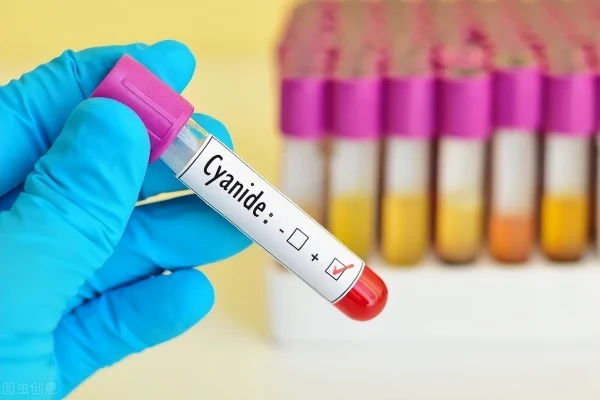Sodium cyanide, a compound that has been integral to the Mining Industry for over a century, plays a crucial role in the extraction of precious metals, particularly gold and silver. This article delves into the chemical properties of Sodium Cyanide, its applications in mining, and the environmental and safety considerations associated with its use.
Understanding Sodium Cyanide
Sodium cyanide (NaCN) is a highly soluble salt that contains the cyanide ion (CN⁻). Cyanide itself is a naturally occurring chemical found in various forms in the environment, including in certain fruits, nuts, and plants. While it is often associated with toxicity, it is important to note that cyanide is present in low concentrations in many everyday items, such as table salt and certain food products like cassava and stone fruits.
In the industrial sector, sodium cyanide is produced in large quantities, with over a million tons utilized annually across various applications, including Electroplating, Metalworking, and the production of organic chemicals and plastics. However, its most notable application remains in the mining industry, where it is used to extract gold and silver from ore.
The Mining Process: How Sodium Cyanide Works
The process of extracting gold from ore using sodium cyanide is known as Cyanide Leaching or cyanidation. This method has been employed by the mining industry for more than 120 years and is particularly effective due to its ability to dissolve gold and silver particles from the surrounding rock.
Crushing and Grinding: The first step in the cyanidation process involves crushing and grinding the ore to liberate the gold particles. This physical process increases the surface area of the ore, allowing for more efficient chemical reactions.
Cyanide Solution Preparation: Once the ore is finely ground, it is mixed with a dilute solution of sodium cyanide, typically in concentrations ranging from 0.01% to 0.05%. The cyanide solution is then introduced to the ore in a leaching tank.
Leaching: During the leaching process, the sodium cyanide reacts with the gold and silver in the ore, forming a soluble complex. This allows the precious metals to be separated from the waste material. The leaching process can take several hours to days, depending on the nature of the ore and the concentration of cyanide used.
pH Control: To prevent the formation of toxic hydrogen cyanide gas (HCN), the pH of the slurry is carefully monitored and adjusted. Lime or other alkaline substances are added to maintain a pH level that keeps cyanide ions stable and non-toxic.
Recovery of Gold: After the leaching process, the gold-cyanide complex is separated from the remaining slurry. This is typically done using activated carbon, which adsorbs the gold from the solution. The gold is then stripped from the carbon and further concentrated before being smelted into gold bars.
Environmental and Safety Considerations
While sodium cyanide is an effective tool for Gold Extraction, its use raises significant environmental and safety concerns. The toxicity of cyanide is well-documented, and improper handling or accidental releases can have devastating effects on ecosystems and human health.
Environmental Impact: The mining industry is under increasing scrutiny regarding its environmental practices. Cyanide spills or leaks can contaminate soil and water sources, posing risks to wildlife and local communities. As a result, many countries have implemented strict regulations governing the use and disposal of cyanide in mining operations.
Safety Protocols: Mining companies are required to adhere to stringent safety protocols to minimize the risks associated with cyanide use. This includes training workers on proper handling techniques, implementing emergency response plans, and conducting regular inspections of storage and processing facilities.
Alternative Methods: In response to environmental concerns, some mining companies are exploring alternative methods for gold extraction that do not rely on cyanide. These methods include gravity separation, flotation, and bioleaching, which utilizes microorganisms to extract metals from ore. However, these alternatives may not be as efficient or cost-effective as cyanidation.
The Future of Sodium Cyanide in Mining
As the demand for gold and silver continues to rise, the mining industry will likely continue to rely on sodium cyanide for extraction. However, the industry is also facing pressure to adopt more sustainable practices and reduce its environmental footprint.
Research and development efforts are underway to improve cyanide management and explore safer alternatives. Innovations in cyanide recycling and detoxification processes are being investigated to minimize waste and reduce the potential for environmental harm.
Moreover, the mining sector is increasingly embracing transparency and accountability, with many companies committing to responsible mining practices. This includes engaging with local communities, conducting environmental impact assessments, and investing in technologies that enhance safety and sustainability.
Conclusion
Sodium cyanide remains a vital component of the mining industry, particularly in the extraction of gold and silver from ore. While its effectiveness is undisputed, the associated environmental and safety concerns necessitate careful management and oversight. As the industry evolves, the focus on sustainable practices and alternative extraction methods will play a crucial role in shaping the future of mining. By balancing the need for resource extraction with environmental stewardship, the mining industry can work towards a more sustainable and responsible future.
- Random Content
- Hot content
- Hot review content
- Toxicity Assessment of Sodium Cyanide and Relevant Hazard Prevention Measures
- အလုပ် ခေါင်းစဉ် : ပြောင်းသာလဲသာ ရှိ သော ဖောက်သည် နှင့် ထောက်ပံ့ ပေး သူ ဆက်ဆံရေး ကျွမ်းကျင် သူMyanmar
- Oxalic acid for mining 99.6%
- Magneto Electric Detonator(Anti stray current)
- Pine oil 85% High Quality Pinitol oil 85% Light Yellow To Colorless Oily Liquid
- Cobalt Sulphate Heptahydrate
- Fertilizer magnesium sulfate/magnesium sulfate monohydrate
- 1Discounted Sodium Cyanide (CAS: 143-33-9) for Mining - High Quality & Competitive Pricing
- 2Sodium Cyanide 98% CAS 143-33-9 gold dressing agent Essential for Mining and Chemical Industries
- 3Sodium Cyanide 98%+ CAS 143-33-9
- 4Anhydrous Oxalic acid 99.6% Industrial Grade
- 5Soda Ash Dense / Light 99.2% Sodium Carbonate Washing Soda
- 6Oxalic acid for mining 99.6%
- 7Calcium hydroxide Industrial Grade 90%
- 1Sodium Cyanide 98% CAS 143-33-9 gold dressing agent Essential for Mining and Chemical Industries
- 2High Quality 99% Purity of Cyanuric chloride ISO 9001:2005 REACH Verified Producer
- 3 High-Quality Sodium Cyanide for Leaching
- 4Powdery emulsion explosive
- 5Industry Grade Electron grade 98% Sulfuric Acid H2SO4 Sulphuric Acid Battery Acid Industrial Sulfuric Acid
- 6Colloidal emulsion explosive
- 7sodium hydrosulfide 70% flakes used Mining Industry












Online message consultation
Add comment: